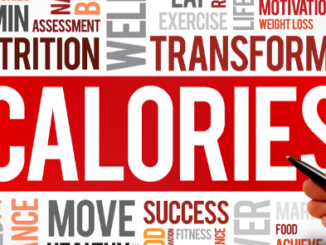
It seems that everywhere you turn there is a different diet touted as being the solution to obesity and healthier living. Some people recommend low-carb diets; others suggest low-fat diets. Then there are countless fad diets of dubious value.
How do you sort through all the recommendations? The U.S. News & World Report in 2021 ranked 39 diets in several categories. Tied for first in the categories of heart-healthy benefits and best diets for healthy eating was the DASH diet developed by researchers from the National Heart, Lung and Blood Institute (NHLBI), which is part of the U.S. National Institutes of Health. The diet also came in second for “best diet overall.”
It isn’t a new diet. Developed more than 20 years ago, it’s undergone rigorous study and research. DASH stands for Dietary Approaches to Stop Hypertension. Repeated testing of the diet has found that it helps to reduce blood pressure and LDL cholesterol, which are two risk factors for heart disease. Adults on the DASH diet are able to lower their blood pressure within weeks. If the dieters also reduce their sodium intake, they have even greater reductions in blood pressure.
WHAT YOU DO AND DO NOT EAT
In the DASH diet, the goal is to build nutrient-dense meals made up of whole grains, lowfat dairy products, vegetables, fruits, fish, poultry, beans, nuts and healthy oils. It limits the intake of fatty meats, full-fat dairy, sugar-sweetened beverages, sweets and sodium. The diet is based on 2,000 calories a day. Daily portions include:
• Grains, 6-8 servings.
• Meats, poultry, and fish, 6 or less.
• Vegetables, 4-5 servings.
• Fruit, 4-5 servings.
• Low-fat or fat free dairy products, 2-3 servings.
• Fats and oils, 2-3 servings.
• Sodium, 2,300 mg.
It recommends limiting servings of nuts, seeds, dry beans and peas to four to five servings a week and sweets to 5 or less a week.
SERVING SIZES
The diet is designed to include food that is commonly found in grocery stories so that it is easy to follow. How much a person should eat depends on their age, gender and activity level. The more active you are, the more calories you need to consume. The older you are, the fewer calories you need. Generally speaking, men need more calories than women. The National Heart, Lung and Blood Institute have charts on their website that show how many servings each person should have based on how many calories they per day.
STAYING ON THE DIET
Everyone has days where they slip up or “cheat.” The NIH offers several hints for how to stay on track with the DASH diet:
• Examine what caused you to get off track.
• Take a long-term view, don’t worry about a minor slip-up.
• Don’t try to change too much at a time.
• Take baby steps. Break anything complex into simple, easy-to-follow steps.
• Write it down. Use a worksheet to track what you eat and drink.
• Celebrate success — but not with food.


